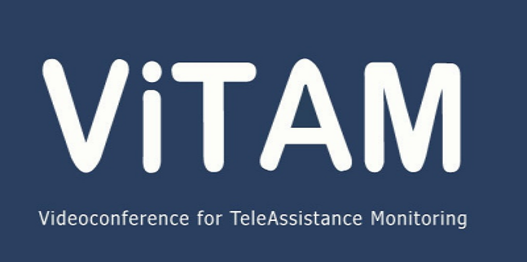Introduction
My first foray into the real-world application of web technologies was with ViTAM® – a project designed to revolutionize teleassistance and monitoring services. Conceived under the BCDS (Broadband Communications and Distributed Systems) research group at the University of Girona, ViTAM® aimed to empower vulnerable populations such as the elderly, disabled, and long-term care patients by providing a convenient platform for interaction with healthcare and social work professionals.
Technologies Used
- Frontend: JavaScript for interactivity and user experience
- WebRTC: For real-time video conferencing capabilities
Project Goals
- To improve and optimize the web experience of ViTAM®.
- To implement new features in the video conferencing rooms.
- To make the platform more accessible and user-friendly for all its users, including healthcare professionals and patients.
Challenges Faced
- User Diversity: Designing for a wide range of users, each with their own sets of physical and cognitive abilities.
- Data Privacy: Ensuring the platform met data protection requirements.
Solutions and Approaches
- WebRTC: Utilized WebRTC technology to enable direct browser-to-browser video conferencing, bypassing the need for external plugins or software.
- Customizable Interfaces: Created several working modes that can be tailored to various workflows like medical consultations, call centers, and remote monitoring.
Key Features
- Versatile Video Conferencing: ViTAM® supports multiple conference modes, including one-to-one and multi-participant conferences.
- Waiting Room for Medical Consultations: Patients can wait in a virtual “waiting room” until their healthcare provider is ready.
- Remote Monitoring and Telerehabilitation: Healthcare professionals can monitor patients remotely, ensuring timely and effective care.
- Social Network Chat: An integrated chat service to encourage community interaction.
- Data-Driven Scheduling: The platform includes an agenda and can send automated reminders for medical appointments and prescriptions.
Outcomes and Impact
- Enhanced User Experience: Provided an intuitive, accessible interface that caters to the specialized needs of each user group.
- Data Security: Successfully complied with stringent data protection requirements, ensuring the privacy of all users.
- Technological Innovation: One of the few platforms offering automatic activation of the specialist’s video and audio without requiring patient interaction.
Lessons Learned
- User-Centered Design: This project reinforced the importance of designing with the end-user in mind, especially when that user may have unique limitations or needs.
- Real-Time Technologies: Gained hands-on experience with WebRTC, understanding the nuances of real-time, browser-based communications.
Future Directions
Some ideas I thought at that moment could be good improvements. They are not a roadmap, just my opinion on next steps:
- IoT Integration: Planning to integrate with various Internet of Things (IoT) devices for more robust monitoring capabilities.
- AI-Driven Analytics: To further enhance the platform’s efficiency by implementing AI algorithms for predictive healthcare.
Contribution Period
March 2015 to April 2016.

